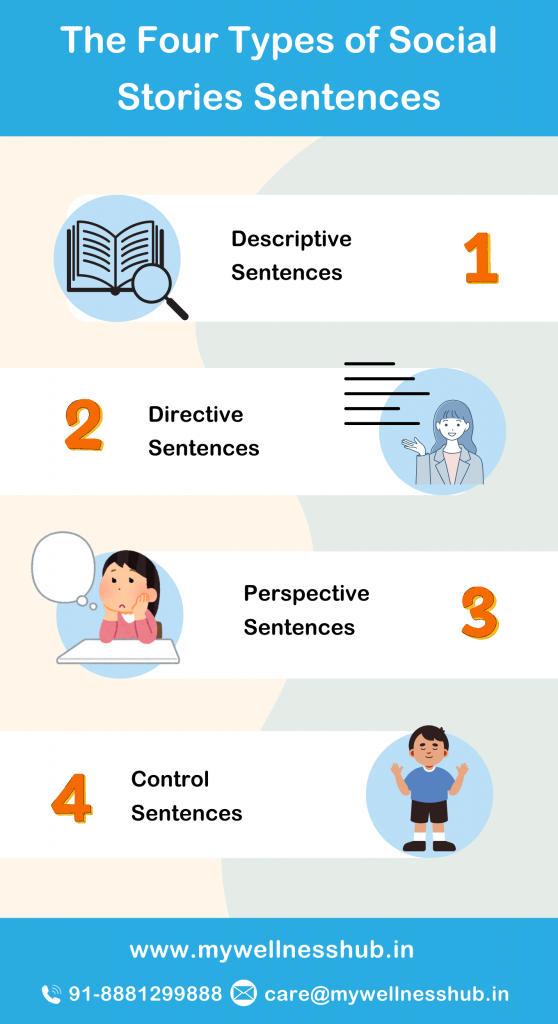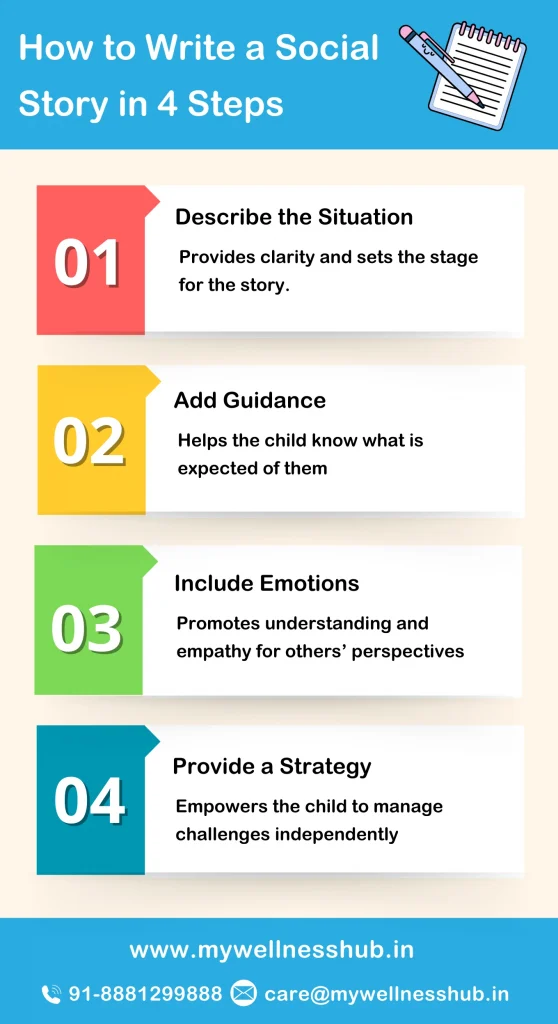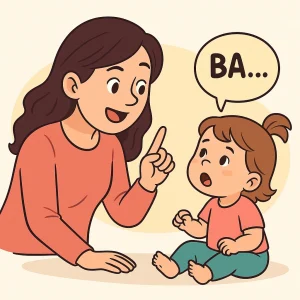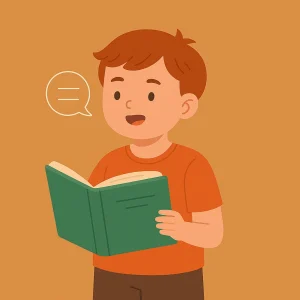What Are the Four Types of Social Stories? A Guide for Parents
By Wellness Hub
Last Updated: January 15, 2025
Social Stories are short, personalized narratives that simplify social situations. Designed for individuals with autism, the types of Social Stories help clarify expectations, reduce anxiety, and build confidence. Whether it’s learning to share or preparing for a new experience, these stories provide step-by-step guidance to navigate social interactions successfully.
By exploring the four types of Social Stories, you’ll gain the tools to create tailored narratives that foster communication and understanding. These stories are not just about teaching—they’re about empowering individuals to thrive socially with clarity and confidence.
Types of Social Stories: An Overview
Social Stories are simple, structured tools designed to help individuals, especially those with autism, understand and manage social situations. The types of Social Stories are crafted using specific sentence structures that work together to create a supportive and easy-to-follow narrative.

Why Use Different Sentence Types?
Using different sentence types ensures the story is clear, helpful, and empowering. Each type of sentence plays a unique role in teaching, guiding, and encouraging the individual. Together, they make the story well-rounded and more effective.
The Four Types of Sentences
- Descriptive Sentences
- Explain facts about the situation, like where it happens and who is involved.
- Example: “The classroom is a place where children learn and work quietly.”
- Directive Sentences
- Gently guide the individual on what to do in the situation.
- Example: “I can ask for help if I don’t understand something.”
- Perspective Sentences
- Show how others might feel or think in that situation.
- Example: “My friend might feel happy when I share my toys with them.”
- Control Sentences
- Help the individual create their own strategies to handle the situation.
- Example: “If I feel nervous, I can take three deep breaths to calm down.”
Why These Sentences Work Together
Each type of sentence plays a key role in the story. The types of Social Stories include descriptive sentences to explain the situation, directive sentences to suggest what to do, perspective sentences to build understanding of others, and control sentences to encourage confidence.

Type 1: Descriptive Sentences
Descriptive sentences are the foundation of every Social Story. They provide straightforward, factual information about a situation, answering key questions like who, what, where, and why. These sentences set the stage by creating a clear picture of the environment or event, helping individuals understand what to expect.
Purpose of Descriptive Sentences
Descriptive sentences are essential because they:
- Offer a clear context for the situation.
- Eliminate confusion by focusing on facts.
- Prepare the individual by explaining what will happen and why.
By answering simple questions, descriptive sentences reduce uncertainty and make social interactions feel less overwhelming.
Examples of Descriptive Sentences
Here are some examples to help you visualize how descriptive sentences work:
- “The library is a quiet place where people read books.”
- “During lunch, we sit at the table and eat food.”
- “At the park, children can play on swings and slides.”
These examples highlight the simplicity and clarity that descriptive sentences bring to a Social Story.
Tips for Writing Effective Descriptive Sentences
Follow these tips to ensure your descriptive sentences are easy to understand and impactful:
- Use clear and simple language: Avoid complex words or sentences. Keep it straightforward so the individual can grasp it quickly.
- Example: Instead of “The library is a venue where silence is maintained to facilitate reading,” write “The library is a quiet place where people read books.”
- Focus on facts without adding opinions: Descriptive sentences should remain neutral and informative. Avoid using judgmental or emotional language.
- Example: Write “The teacher writes lessons on the board,” instead of “The teacher always writes the best lessons.”
- Answer the basic questions: Make sure to include details that answer who, what, where, and why to paint a complete picture.
- Example: “The park is a place where families can relax and have fun.”
Why Descriptive Sentences Matter
By providing clear, factual information, descriptive sentences set the tone for the entire Social Story. They help individuals feel more comfortable by giving them a clear understanding of the situation. This simple step goes a long way in reducing anxiety and encouraging positive participation.
Type 2: Directive Sentences
Directive sentences are the heart of every Social Story, offering gentle guidance on what the individual should do in a specific situation. They are written in a positive tone, helping the person feel supported while learning appropriate responses.
Purpose of Directive Sentences
The main goal of directive sentences is to:
- Guide behavior in a clear and non-threatening way.
- Help the individual understand what is expected of them in a given scenario.
- Reduce uncertainty and build confidence by offering actionable steps.
Examples of Directive Sentence:
Here are a few examples of how directive sentences might be used in Social Stories:
- “I can raise my hand if I have a question in class.”
- “I will try to wait my turn when playing a game.”
- “If I need a break, I can ask my teacher for help.”
These sentences are simple, positive, and encourage the individual to take action in a calm and confident manner.
Why Directive Sentences Matter
Directive sentences play a crucial role in promoting positive behavior and reducing anxiety. By focusing on achievable actions, they:
- Empower the individual to take charge of their behavior.
- Provide reassurance by outlining clear steps.
- Encourage the development of social and communication skills.
For instance, a sentence like, “I can say, ‘Can I play too?’ when I want to join a game,” helps the child feel prepared to handle that situation.
Tips for Writing Effective Directive Sentences
Here are a few tips to craft directive sentences that are helpful and actionable:
- Frame them as suggestions rather than commands: Use phrases like “I can” or “I will try” instead of “I must” or “I have to.” This makes the guidance feel more supportive and less pressuring.
- Example: Write “I will try to sit quietly during storytime,” instead of “I must sit quietly during storytime.”
- Keep them actionable and achievable: Ensure that the action is realistic and within the individual’s ability to perform. Break down complex tasks into smaller, manageable steps if needed.
- Example: “I can take deep breaths to calm myself,” instead of “I need to stay calm at all times.”
- Use positive language: Focus on what the individual can do, rather than what they shouldn’t do. This fosters a more constructive and optimistic outlook.
Type 3: Perspective Sentences
Perspective sentences are an essential part of Social Stories. They help individuals understand the thoughts, feelings, and intentions of others in social situations. By showing how others might react, these sentences promote empathy and emotional connection, making it easier to navigate social interactions.
Purpose of Perspective Sentences
The goal of perspective sentences is to:
- Build an understanding of how others feel or think.
- Encourage empathy by explaining the emotions of people involved in the situation.
- Foster social awareness, helping individuals connect with others on a deeper level.
Examples of Perspective Sentences
Here are a few examples to illustrate how perspective sentences work:
- “My friend might feel happy when I share my toys.”
- “The teacher feels proud when students listen carefully.”
- “My classmates might feel upset if I interrupt while they are speaking.”
These sentences help the individual see situations from another person’s point of view, which is key to developing social skills.
Importance for Social Awareness
Perspective sentences play a critical role in improving social understanding and emotional intelligence. They:
- Help individuals recognize emotional cues: By identifying how their actions affect others, individuals can respond more appropriately.
- Encourage positive social interactions: Understanding others’ feelings leads to more thoughtful and respectful behavior.
- Support emotional connection: Perspective sentences help bridge gaps in communication by teaching empathy.
For example, a sentence like, “My mom feels happy when I help clean up my toys,” reinforces the idea that actions can have a positive emotional impact on others.
Tips for Writing Effective Perspective Sentences
When crafting perspective sentences, keep these tips in mind:
- Use real-life scenarios: Relate the sentence to situations the individual is familiar with. This makes it easier for them to understand and apply the concept.
- Example: “My sister feels excited when I play games with her.”
- Keep emotions relatable and understandable: Use simple and clear emotional descriptions that the individual can recognize and connect with.
- Example: “The librarian feels thankful when we talk quietly in the library.”
- Focus on cause-and-effect relationships: Show how specific actions can lead to particular emotional reactions in others.
- Example: “My friend might feel hurt if I don’t let them take a turn during the game.”
Type 4: Control Sentences
Control sentences are unique because they are created by the individual themselves. These sentences serve as personal reminders or strategies to help manage specific situations. They empower the individual to take charge of their actions and emotions, reinforcing self-regulation and coping skills.
Purpose of Control Sentences
The main purpose of control sentences is to:
- Help the individual remember strategies to handle challenging situations.
- Encourage problem-solving and independence.
- Reinforce coping mechanisms by providing a clear, actionable plan.
Control sentences are like personalized tools that individuals can use whenever they feel overwhelmed or unsure about what to do.
Examples of Control Sentences
Here are a few examples to illustrate how control sentences work:
- “If I feel angry, I can take three deep breaths to calm down.”
- “I can count to ten when I need to wait for my turn.”
- “If I don’t understand something, I can ask an adult for help.”
These examples show how simple and actionable control sentences can help the individual manage their emotions or actions in real-time.
Empowering the Individual
Control sentences empower individuals by:
- Promoting independence: They provide tools for self-management, making the individual feel more in control of their behavior.
- Building confidence: Knowing they have a plan helps reduce anxiety in unfamiliar or stressful situations.
- Encouraging active participation: Since these sentences are created by the individual, they are more likely to use them when needed.
Overview of the Types of Social Stories
| Type of Sentence | Purpose | Example |
|---|---|---|
| Descriptive Sentence | Provides factual information about the situation. | “The library is a quiet place where people read.” |
| Directive Sentence | Guides the individual on what to do. | “I will wait my turn when it’s my time to play.” |
| Perspective Sentence | Explains how others might feel or think. | “My friend feels happy when I share my toys.” |
| Control Sentence | Offers strategies for managing situations. | “If I feel upset, I can count to ten to calm down.” |
How to Combine These Four Types Effectively
Creating a meaningful and impactful Social Story involves combining the four types of Social Stories—descriptive, directive, perspective, and control sentences—into a cohesive narrative. Each type contributes a unique element, ensuring the story is both informative and empowering for the individual.
Importance of Blending All Four Sentence Types
When all four sentence types are used together, a Social Story achieves:
- Clarity: Descriptive sentences provide context.
- Guidance: Directive sentences offer actionable steps.
- Empathy: Perspective sentences build understanding of others’ feelings.
- Independence: Control sentences reinforce self-regulation strategies.
This balanced approach creates a story that not only explains what to expect but also guides behavior, fosters social awareness, and equips the individual with tools to manage the situation.
Example of a Complete Social Story
Here’s an example of how these sentence types can work together:
Scenario: Recess at School
- Descriptive Sentence: “Recess is a time to play with friends outside.”
- Directive Sentence: “I will try to share the swing with others.”
- Perspective Sentence: “My classmates feel happy when I play nicely with them.”
- Control Sentence: “I can say, ‘Let’s take turns,’ if I want to use the swing.”
This story provides clear context, actionable guidance, empathy-building insights, and a personal coping strategy, making it easy for the child to understand and apply.
Tips for Achieving Balance in Story Construction
To craft effective Social Stories, keep these tips in mind:
- Start with the Descriptive Sentence: Set the scene by explaining the environment or situation.
- Example: “The cafeteria is where we eat lunch together.”
- Add a Directive Sentence: Offer gentle guidance on what the individual can do in the situation.
- Example: “I can line up quietly to get my food.”
- Include a Perspective Sentence: Highlight how others may feel or react.
- Example: “The lunch staff feels happy when students say ‘thank you’ after getting their food.”
- Finish with a Control Sentence: Empower the individual with a personal strategy they can use.
- Example: “If I feel nervous about waiting in line, I can take a deep breath and think about what I want to eat.”
- Keep It Short and Simple: Avoid overwhelming the individual with too much information. Focus on what’s most important for the situation.
- Make It Relevant: Tailor the story to the individual’s needs and experiences. Use examples they can relate to.
- Involve the Individual: Let them contribute to the control sentence or other parts of the story for a sense of ownership.
Conclusion
Social Stories are powerful tools that help individuals understand and navigate social situations. By using the four types of Social Stories—descriptive, directive, perspective, and control—you can create personalized stories that provide clear guidance and build confidence. Every story can be tailored to the individual’s unique needs, making it relatable and impactful. Add visuals or real-life scenarios to make it even more engaging! Ready to start exploring the types of Social Stories? Visit Wellness Hub for tips, templates, and ideas to guide you. Let’s make learning social skills simple, fun, and effective!
Frequently Asked Questions:
1. What are Social Stories?
Social Stories are short, simple stories designed to help children, especially those with autism, understand and handle social situations. They teach expected behaviors and offer guidance in a clear, supportive way.
2. How do Social Stories help children?
Social Stories make social situations less overwhelming by explaining what to expect and how to respond. They reduce anxiety, build confidence, and teach positive social skills.
3. What are the four types of Social Stories?
The four types are:
- Descriptive Sentences: Provide facts about the situation.
- Directive Sentences: Guide actions or behavior.
- Perspective Sentences: Explain others’ feelings or thoughts.
- Control Sentences: Help the child remember strategies for coping.
4. Who can use Social Stories?
Parents, teachers, and therapists can use Social Stories to support children with autism or other communication challenges. They’re helpful for teaching social, emotional, or behavioral skills.
5. How do I write a Social Story?
Start by:
- Describing the situation with facts.
- Adding clear guidance on what to do.
- Explaining how others may feel.
- Including a personal coping strategy.
Keep the language simple and age-appropriate.
6. Why are visuals important in Social Stories?
Visuals make the story more engaging and easier to understand. Adding pictures, symbols, or photos helps children visualize the situation and connect with the story.
7. Can Social Stories be personalized?
Yes! Personalization makes Social Stories™ more effective. Include the child’s name, familiar places, and real-life scenarios to make them relatable and meaningful.
8. When should I use Social Stories?
Use Social Stories before a new or challenging situation, like starting school, visiting the doctor, or learning how to share. They prepare children for what to expect and how to respond.
9. How often should I read a Social Story?
Read the story regularly before the situation occurs. Repetition helps the child understand and remember the guidance. You can also revisit the story as a reminder when needed.
10. Where can I find resources to create Social Stories?
You can explore Wellness Hub for ready-to-use templates, tips, and guides to create personalized Social Stories™. They make the process easy and effective for parents and caregivers.
About the Author:
Shravanaveena Gajula
M.Sc ., Speech and Language Pathology (5+ years of experience)
Shravanaveena Gajula is a dedicated Audiologist and Speech-Language Pathologist with a BASLP and an M.Sc in Speech and Language Pathology. With experience spanning multiple settings, including Wellness Hub and Ashray Akruti, Veena specializes in a wide range of disorders from developmental issues in children to speech and language assessments in adults. Her expertise includes parent counseling, managing speech sound and fluency disorders, and creating individualized therapy programs. Veena is also PROMPT certified and an author of several insightful blogs on speech and language pathology, aiming to educate and assist caregivers in supporting their loved ones.
Book your Free Consultation Today
Parent/Caregiver Info:
Client’s Details:
* Error Message








